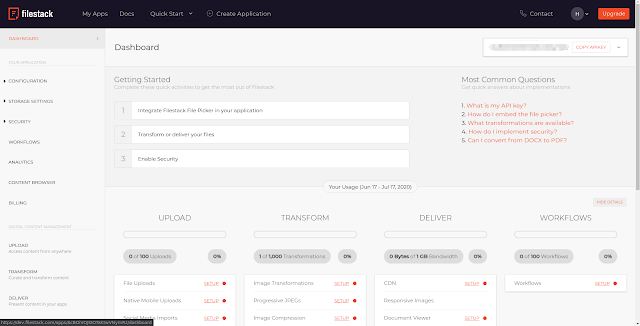
What is Filestack?
Filestack is a collection of effective APIs and tools that make it simple to upload, transform, and transport material. It has a lovely UI interface, and you can quickly and easily manage all your data management requirements thanks to its robust APIs. Every month, billions of uploads, transformations, and downloads are powered by the scalable infrastructure of Filestack, giving users all around the world excellent performance.
Through numerous, skillfully created UI interfaces, Filestack can help you give your users excellent experiences whenever you have to manage files in your business, regardless of the environment. They are straightforward to build and supported by Filestack’s robust APIs, which are easy to use and give your software developers a lot of flexibility.
Uploads, Transformations, and Delivery are the three primary areas in which Filestack works with contemporary software file management systems (which include performance optimization, responsiveness, etc.). They can also offer your business teams information about how your customers use the technology and the effects it has on your corporate goals.
How Does Filestack Work?
User Interface and Infrastructure
Filestack provides a global architecture with its primary data center and database housed in North Virginia, USA. This is in order to give businesses and their users the lowest latency and highest performance possible. All systems are developed to provide the highest levels of performance, security, and scalability.
Every month, billions of uploads, transformations, and downloads are handled by Filestack. Our mission is to offer a safe and secure system that will enable users to manage their files quickly and error-free.
Currently, all Filestack functions are accessible through HTTP protocol via carefully designed UI interfaces (web and native).
By default, Filestack saves your files in its own S3 bucket, which is located in Northern Virginia. However, you have the option to utilize another storage service (such as Google Cloud Storage, Dropbox, Rackspace, or Azure). Your users must first authenticate with the chosen service and grant OAuth2 application access to their resources before they may upload files from cloud integrations in the file picker.
Filestack’s Content Delivery Network (CDN) is a global network of servers that cache your files so that they are not downloaded from Filestack every time someone requests them. Files are cached in the CDN for 30 days (with some exceptions), but you can change that behavior using the Processing API. You can use any file that is available over HTTP protocol that is in the public network or you can use files from your existing storage.
At Filestack, confidentiality and privacy security are top priorities. We take steps to protect both your data and our infrastructure.
The majority of the time, we work with user-generated content, thus data security and protection are shared duties. Your Filestack implementation is public by default. It implies that the location from which your files are submitted and delivered is unrestricted. Because of this, Filestack offers its clients a variety of tools, such as Security Protocols and Domain Whitelists, that enable intricate and detailed control over what can be done when, when, and how (and by whom).
GDPR and Privacy Shield compliance are both met by Filestack.
If you’re utilizing our cloud integrations, the Developer Portal is where you can configure your application’s security settings, storage backends, storage aliases, and OAuth clients. In the Assets section, you can also look through all of the submitted files for your application and view metrics.

Getting your API key
You can start generating applications as soon as you have an account. The public API key and secret key assigned to each application are used by Filestack to authorize and grant access to services on your resources.
You can use Filestack to upload and modify files if you have an API key. You can construct many applications for various use cases since each app has configuration parameters that only pertain to it.